One of the classic parent-to-be activities is setting up the nursery. In fact, everyone and their mother will ask you 1) if you’ve set up the nursery and 2) what your theme is. (They ask these questions right after asking “How far along are you?” and “Are you sure you’re not having twins?”)
Friends and family quickly came to regret asking me about the nursery. I would launch into a long-winded thing about how the American Academy of Pediatrics (AAP) now recommends that babies sleep in their parents’ room for at least the first 6 months and ideally the first year. Why? Because proximity at night can make breastfeeding easier. The closeness also helps prevent Sudden Unexplained Infant Death Syndrome (SUIDS – the new SIDS).
When those guidelines first came out, a friend wondered aloud if the AAP would also be supplying a caffeine IV drip and the contact information for divorce attorneys. I share that because it’s important to remember that while the AAP knows a lot about a lot of things to help your baby, sometimes what’s right for your family may not follow the AAP guidelines to a T. That’s ok. You know yourself best.
But I digress.
If you follow the AAP guidelines, you get a full 6 months after your baby is born before the nursery needs to be ready. What *does* need some focus, is where your baby will sleep for those first months.
From here on out, I’m going to assume that your baby will be sleeping in a separate sleep space from you, which is awesome because that’s the safest way for your little one to be sleeping.
Here’s how to set up the safest way for your baby to sleep:
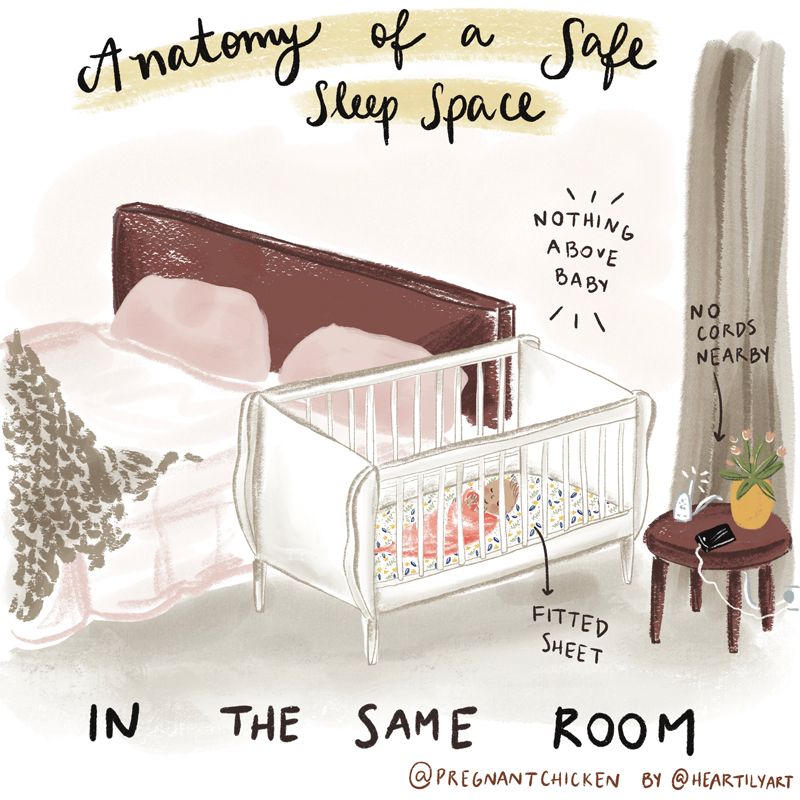
Safe sleep for your baby in the same room:
- The crib, bassinet, portable crib, or play yard are positioned for easy access, but nothing from my bed or nightstand (pillows, etc.) can fall into them.
- The mattress is firm and flat.
- There are no cords from blinds, baby monitors, sound machines—anything with a cord can get wrapped around your baby’s tiny body parts – fingers, wrists, and yes, even necks.
- Nothing above your baby, like pictures, wall hangings, shelves, etc., could fall. Stuff falls—don’t have it fall on your kid.
- It is free from pillows, bumpers, blankets or pacifiers with stuffed animals attached – the snugglier an item is, the higher the risk of suffocation.
- The space looks boring and kind of lonely. Excellent! That’s what we are going for. Don’t worry – your baby will feel very loved even without a ton of fluff in their bed.
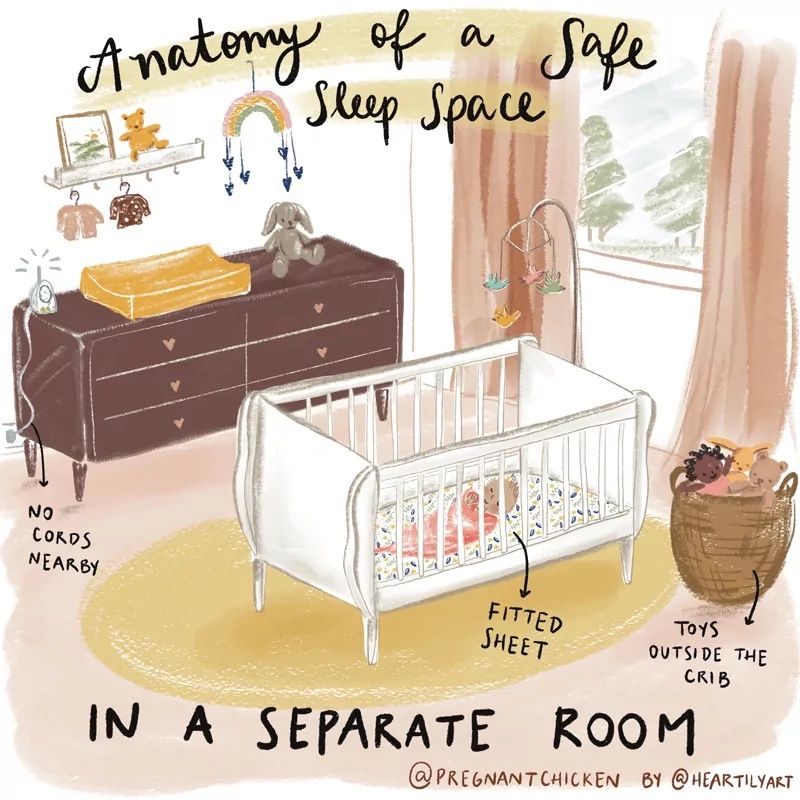
Safe sleep for your baby in a separate room:
- The crib has a mattress that is firm and flat.
- The crib does not have a drop side. (This was common in cribs made before 2010.
- The mattress has a fitted sheet, and that’s it.
- There are no cords from blinds, baby monitors, or sound machines nearby.
- There is nothing above your baby, like pictures, wall hangings, shelves, etc. Ignore cute pictures on Pinterest with letters, shelves, pictures, and whatnot hanging above a baby bed. If you have to have something hanging above the crib, make sure the crib is pulled away far enough from the wall to land on the floor and not your baby.
- It is free from pillows, bumpers, blankets, or pacifiers with stuffed animals attached.
- If you choose to have a mobile, it is firmly attached and well out of reach. (You promise to remove it once your child can get up on their hands and knees. Promise!)
- It is free from soft-sided loungers (DockATot, Snuggle Me, etc.). Do not put them in the crib.
- It is free from positioners or wedges. (See this post for reflux concerns.)
- The sleep space looks sad and something out of a Dicken’s novel. Bingo! That’s what we are going for.
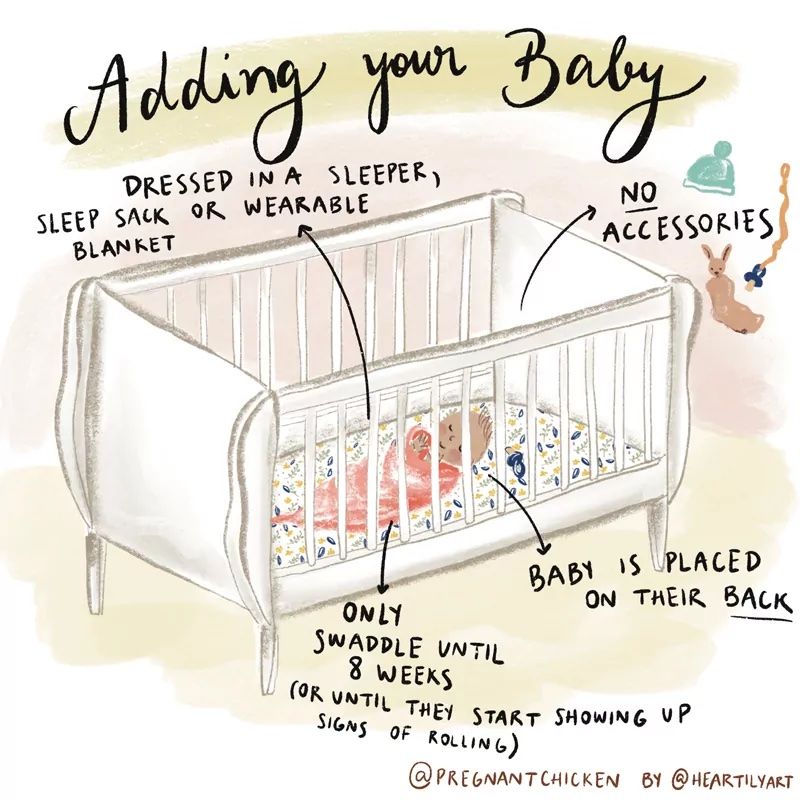
Adding your baby:
- Baby is placed on their back.
- Baby will only be swaddled until 8 weeks or until they start showing signs of rolling like back arching, kicking legs over or arching their neck to the side. (Whichever comes first.)
- Add a pacifier if your kid digs it (no stuffed animals or blankets attached). Pacifiers can help prevent SUIDS.
- Dressed in a sleeper, sleep sack or wearable blanket that won’t creep up over their face. Put baby in one more layer than what you are comfortable in.
- Baby is not wearing a hat, bow, teething necklace, pacifier clip, or any Mardi Gras bead apparatus that your sister thought was ‘cute’.
Add ons:
- Fan. Moving air has been shown to help reduce the risk of SUIDS. Fans help move carbon dioxide away from your baby’s resting area, giving your kiddo fresher air to breathe. You don’t need to go crazy and aim a fan right at your baby’s head (that’s not so safe anyway). A portable table or box fan works great, or if you have one, a ceiling fan on a gentle setting will do the trick.
- White noise. A constant background sound (we love Lectrofan) isn’t necessary for safety, but it can protect your sanity.
- Blackout shades or curtains. The darker the room, the better babies sleep. If blackout shades aren’t in your plan, you can also use tin foil pressed over the window.
- Heating Pad. This great tip comes up a lot for creating a warm spot for your baby to transition from your arms to the crib. Remove it from the crib before you place your baby down and keep it clear from the space.
Don’t worry, empty sleep spaces are still full of love
A safe sleep space is an empty sleep space. If it looks like an unloving, Soviet-era Nurse Ratchett set up the crib, you’re on the right track. Channel your inner minimalist.
For some, bare cribs can prompt feelings that their baby isn’t as cozy and loved as possible. If this is you, banish these thoughts from your mind. A safe baby feels very loved, indeed.
Our next reco: Baby Prep Kit: Everything To Do Before Your Newborn Arrives

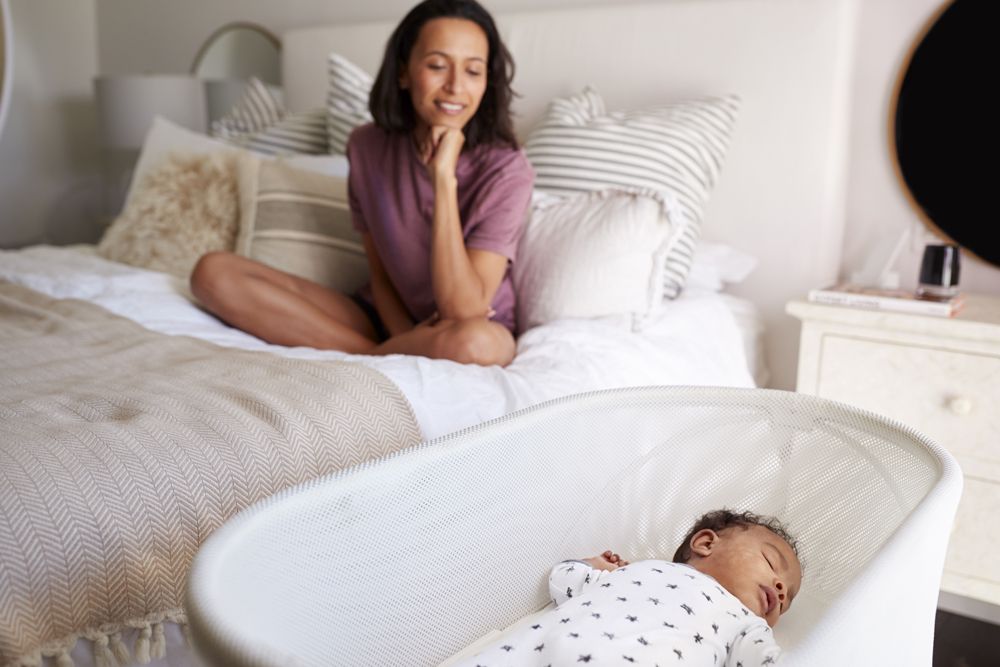
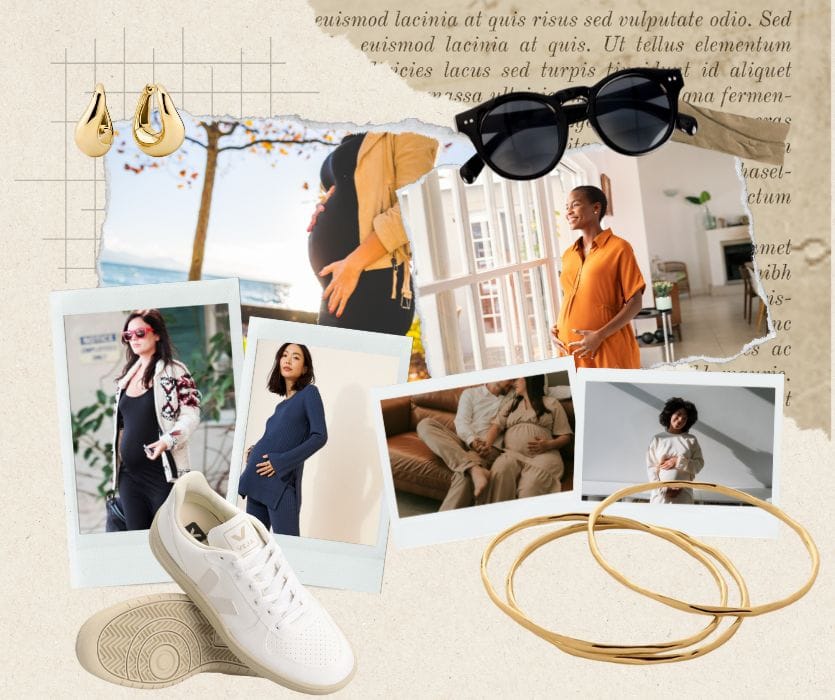

Leave a Comment